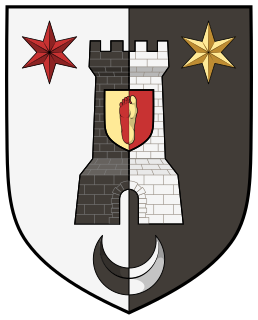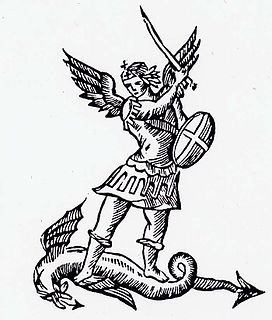
The Royal Theatre of La Monnaie, is an opera house in central Brussels, Belgium. The National Opera of Belgium, a federal institution, takes the name of this theatre in which it is housed—La Monnaie in French or De Munt in Dutch—referring both to the building as well as the opera company.

The Palace of Justice of Brussels or Law Courts of Brussels is the most important court building in Belgium. It is located on the Place Poelaert/Poelaertplein in the Marolles/Marollen district of Brussels. Built between 1866 and 1883 by the celebrated architect Joseph Poelaert in the eclectic style, the building is reputed to be the largest constructed in the 19th century and is a notable landmark of Brussels. The total cost of the construction, land and furnishings was somewhere in the region of 45 million Belgian francs.

Joseph Poelaert was a Belgian architect.

The Laeken Cemetery in Brussels is the city's oldest cemetery still in function and resting place of the Belgian Royal Family. It is known as the "Belgian Père Lachaise" because it is the burial place of the rich and the famous and for the abundance of its funerary heritage.

The Palace of Justice is the seat of the Supreme Court of Peru. It is located in the Lima District of the city of Lima, capital of Peru. Construction started during the second government of Augusto B. Leguía (1919–1930) and finished under the presidency of Óscar R. Benavides, who inaugurated the building in 1938. The Palace was built in a neoclassical style as its plans were based on those of the Law Courts of Brussels, Belgium, work of Joseph Poelaert. However, it lacks the dome of its Belgian counterpart and it is significantly smaller.

Burgher arms or bourgeois arms are coats of arms borne by persons of the burgher social class of Europe since the Middle Ages. By definition, however, the term is alien to British heraldry, which follows other rules.

The Marolles or Marollen is a popular historic neighbourhood of Brussels, situated between the Palace of Justice and Brussels-South railway station. Lying at the heart of Marolles are the Chapel Church and the Place du Jeu de Balle/Vossenplein. Major arteries of the district include Rue Haute/Hoogstraat, Rue Blaes/Blaesstraat and Rue des Tanneurs/Huidevetterstraat. Its inhabitants are called Marolliens. The dialect known as Marols (marollien) was spoken in this area until the 20th century.

Jean-Pierre, Baron de Bandt is a Belgian lawyer and was the President of the Coudenberg group, a Belgian federalist think tank.
Ignace Brice was a neoclassic painter of genre, portraits and religious scenes from Brussels.

Henri van Dievoet was a Belgian architect.

Gabriel Van Dievoet was a Belgian decorator and Liberty style sgraffitist. He was the brother of the architect Henri Van Dievoet.

The Church of Our Lady of Laeken is a neo-Gothic Roman Catholic church in Laeken, Brussels, Belgium. It was originally built in memory of Queen Louise-Marie, wife of King Leopold I to the design of architect Joseph Poelaert.

Victor Rousseau was a Belgian sculptor and medalist.

Neoclassical architecture appeared in Belgium during the period of Austrian occupation in the mid-18th century and enjoyed considerable longevity in the country, surviving through periods of French and Dutch occupation, and the birth of Independent Belgium, surviving well into the 20th century.

The Poelaert Foundation is a Belgian association of public interest, incorporated by the Bar of Brussels. The Foundation bears the name of the architect Joseph Poelaert.
The following lists events that happened during 1883 in the Kingdom of Belgium.

The Van Dievoetfamily is a Belgian family originating from the Duchy of Brabant. It descends from the Seven Noble Houses of Brussels and its members have been bourgeois (burgess) of that city since the 1600s. It formed, at the end of the 17th century, a now extinct noble Parisian branch called Vandive.

In Brussels, like in most European cities, one needed the capacity of bourgeois in order to not only exercise political rights, but also to practice a trade, which, in Brussels, meant to be a member of the Guilds and/or of the Seven Noble Houses. The charter of Brussels, as codified in 1570 in articles 206 and following, provided the conditions of admission to the bourgeoisie of the city. The Bourgeois were the patrician class of the city. This social class was abolished by Napoleon during the French occupation.

Major Eugène Van Dievoet, was a Belgian architect and Major of military engineering. He mainly designed Art Deco and Beaux-Arts in Brussels.
This page is based on this
Wikipedia article Text is available under the
CC BY-SA 4.0 license; additional terms may apply.
Images, videos and audio are available under their respective licenses.
















